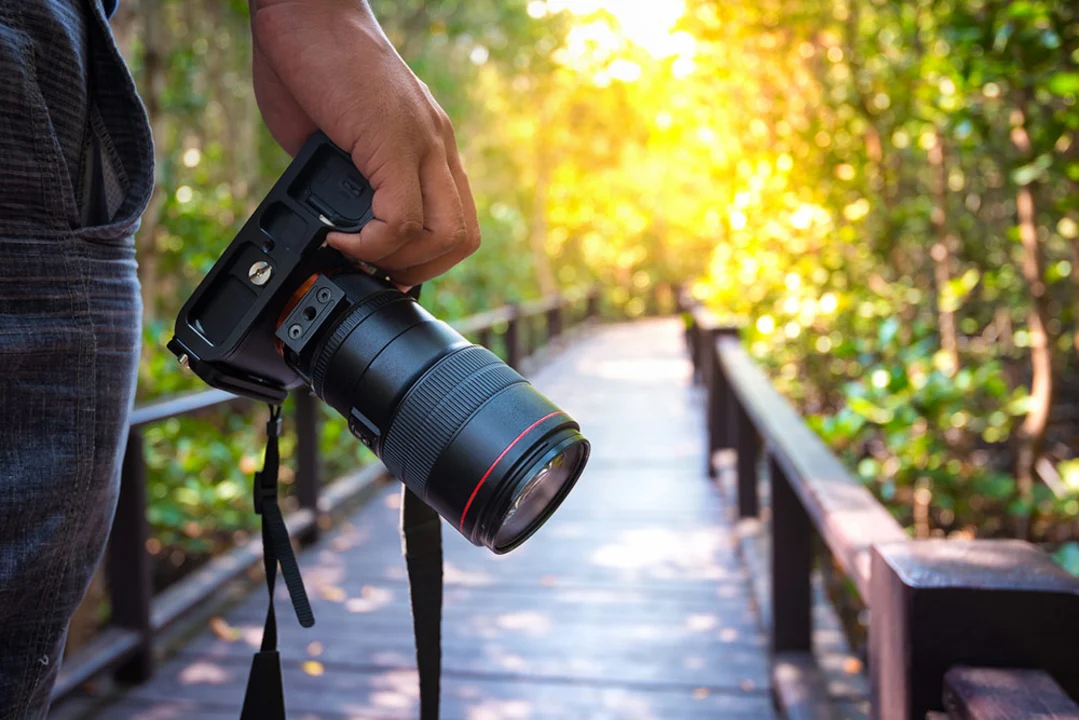Which lens is used for which type of photography?

Exploring Different Types of Lenses for Different Types of Photography
Photography is a beautiful art form that can be used to capture stunning images for any occasion. Whether you’re a professional photographer or a casual enthusiast, the right lens can make all the difference in the quality of your photo. Different types of lenses can be used for different types of photography, and the right lens for the job can bring out the best in your photos.
Wide-angle lenses are great for landscape photography, as they can capture a much wider field of view than other lenses. This allows you to capture more of the scene in a single photo. Wide-angle lenses are also good for architecture and interiors, as they can capture more of the room in a single shot. They can also be used to create interesting perspectives and exaggerate the size of subjects.
Telephoto lenses, on the other hand, are great for capturing distant subjects. They are ideal for wildlife and sports photography, as they can capture the action from far away. Telephoto lenses also offer a much narrower field of view than wide-angle lenses, allowing you to focus on a single subject in the foreground and blur out the background.
Macro lenses are great for close-up photography, as they can focus on very small objects. This can be used to capture stunning detail in flowers, insects, and other small objects. Macro lenses are also great for product photography, as they can capture intricate details that may be missed by other lenses.
Fish-eye lenses are a unique type of lens that can capture a very wide, 180-degree field of view. This can be used to create dramatic and distorted images, as well as capture a wide view of the scene. Fish-eye lenses can also be used to create unique perspectives and create interesting effects.
Prime lenses are fixed focal length lenses and are great for portrait photography. These lenses offer excellent sharpness and clarity, allowing you to capture stunning images of your subject. Prime lenses also generally offer a wider maximum aperture, allowing you to capture photos with shallow depth of field.
No matter what type of photography you’re doing, there’s a lens that’s perfect for the job. The right lens can make all the difference in the quality of your photos, so it’s important to do some research and find the right lens for the job.
A Comprehensive Guide to Choosing the Right Lens for Your Photography
Choosing the right lens for your photography can be daunting for both amateur and experienced photographers alike. With the vast selection of lenses available to choose from, it can be difficult to know which one is right for the job. Here is a guide that will help you select the right lens for your particular photography needs.
Wide-Angle Lenses
Wide-angle lenses are ideal for landscape photography, architectural photography, and any situation where you need to capture a wide area. They are also great for creating dramatic perspectives or for capturing vast expanses of terrain. Wide-angle lenses are typically focal lengths of 35mm or less. The wider the angle of view, the more distortion there will be.
Telephoto Lenses
Telephoto lenses are great for capturing distant subjects such as wildlife and sports. They are also great for getting close-up shots of small objects such as flowers. Telephoto lenses are typically focal lengths of 85mm or more. The longer the focal length, the more powerful the lens.
Macro Lenses
Macro lenses are ideal for close-up photography of small objects such as insects, flowers, and other small details. Macro lenses are typically fixed focal lengths between 50mm and 100mm. The shorter the focal length, the more magnification the lens will provide.
Standard Lenses
Standard lenses are great for general-purpose photography. They are versatile and can be used for a variety of different types of photography. Standard lenses are typically focal lengths between 35mm and 85mm. The mid-range focal lengths provide a good balance between wide-angle and telephoto lenses.
Prime Lenses
Prime lenses are fixed focal length lenses with no zoom capability. They are great for low-light photography and for creating shallow depths of field. Prime lenses are typically available in focal lengths of 35mm, 50mm, and 85mm.
A Beginner's Guide to Understanding the Different Types of Lenses for Different Types of Photography
When it comes to photography, the type of lens you use plays an important role in the quality and look of the photos you take. Different lenses are designed for different purposes, and the type of lens you choose can make a big difference in the way your photos look.
Wide-Angle Lenses
Wide-angle lenses are ideal for capturing a wide field of view, making them great for landscape photography. They are also great for capturing interiors or architecture as they allow you to capture the entire scene in a single photo. Wide-angle lenses have a shorter focal length than other lenses, which allows them to capture more of the scene in a single photo. Examples of wide-angle lenses include the Canon EF-S 10-22mm f/3.5-4.5 USM, the Nikon AF-S DX Nikkor 10-24mm f/3.5-4.5G ED, and the Sony Vario-Tessar T* FE 16-35mm f/4 ZA OSS.
Telephoto Lenses
Telephoto lenses are designed for capturing subjects from a distance. These lenses have a longer focal length than wide-angle lenses, which allows them to zoom in on distant subjects. Telephoto lenses are ideal for wildlife photography and sports photography as they allow you to capture the action from a distance. Examples of telephoto lenses include the Canon EF 70-200mm f/2.8L IS USM, the Nikon AF-S DX Nikkor 55-200mm f/4-5.6G ED VR II, and the Sony FE 70-200mm f/4 G OSS.
Standard Lenses
Standard lenses are ideal for everyday photography. These lenses have a focal length that is similar to that of the human eye, which makes them ideal for capturing everyday scenes. Standard lenses are also great for portraiture as they allow you to capture a subject in a natural perspective. Examples of standard lenses include the Canon EF-S 24mm f/2.8 STM, the Nikon AF-S DX Nikkor 35mm f/1.8G, and the Sony FE 28mm f/2.
Macro Lenses
Macro lenses are designed for capturing close-up details. These lenses have a short focal length, which allows them to capture subjects in extreme close-up detail. Macro lenses are ideal for capturing small details, such as insects or flowers. Examples of macro lenses include the Canon EF 100mm f/2.8L Macro IS USM, the Nikon AF-S DX Micro-Nikkor 40mm f/2.8G, and the Sony FE 90mm f/2.8 Macro G OSS.
Conclusion
When it comes to photography, the type of lens you use can make a big difference in the quality and look of the photos you take. Different types of lenses are designed for different purposes, so it's important to choose the right lens for the job. Wide-angle lenses are great for capturing a wide field of view, telephoto lenses are great for capturing distant subjects, standard lenses are great for everyday photography, and macro lenses are ideal for capturing close-up details. With the right lens, you can take amazing photos that you'll be proud to share.
